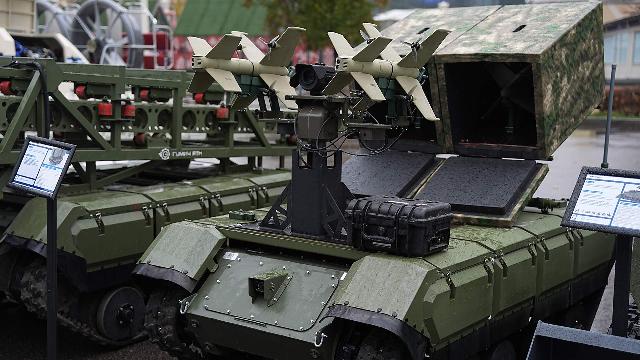Domestic developments have aroused great interest from foreign experts
Combat lasers, exoskeletons, ground and aerial drones — such novelties can be seen at the international exhibition "Interpoltech-2025" in Moscow. Anti-drone technology is of particular interest to visitors, making it possible to protect both small facilities and industrial giants. Military attaches and representatives of law enforcement agencies and special services from dozens of countries came to see the novelties of Russian companies.
Several drones per minute
In front of the entrance to the VDNKH pavilion, where the exhibition is taking place, samples of the latest technology are presented. A khaki truck immediately catches the eye. This is a mobile laser for countering drones, which was first introduced to the general public by the Shvabe holding company of the Rostec State Corporation.
— The laser system is capable of hitting several high-speed UAVs of various types, including small FPV drones, within a minute. At the same time, power lasers are safe for use near civilian infrastructure," said Bekhan Ozdoev, Industrial Director of the cluster of armaments, ammunition and Special chemicals at Rostec State Corporation.
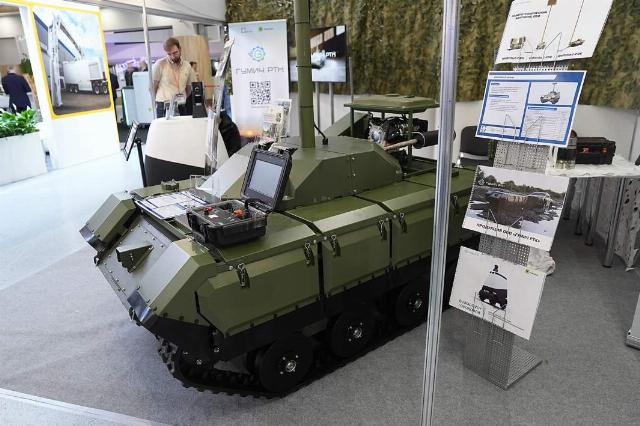
The Pulse-D robotic complex
Image source: Photo: IZVESTIA/Pavel Volkov
Representatives of the development company said that the laser system will be particularly effective in protecting large objects. For example, airfields or oil refineries.
The complex is based on an air-cooled power laser and an optoelectronic system for detecting and tracking targets. The equipment is powered by on-board batteries, which can be quickly recharged from external sources.
All the necessary equipment, along with an automated operator's workplace, is located on an all-terrain truck. This ensures high mobility of the complex and allows you to quickly deploy it in the right place. The installation also exists in a stationary version.
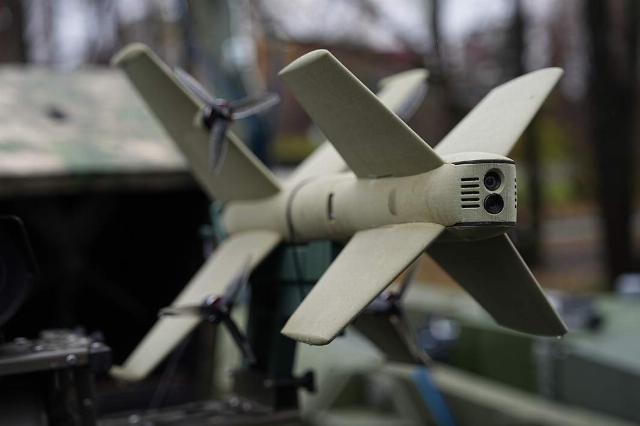
Air defense combat module based on the Impulse-M NRTC
Image source: Photo: IZVESTIA/Pavel Volkov
The novelty can be used as an independent means of countering drones, as well as as part of layered air defense systems.
This application provides better target detection, as the complex receives information from third-party radar and acoustic stations.
The exhibition halls are sold out. Most of the visitors are around the air defense laser of the Lokmas location workshop. It has not yet received a name, and the company calls it an optoelectronic impact complex.
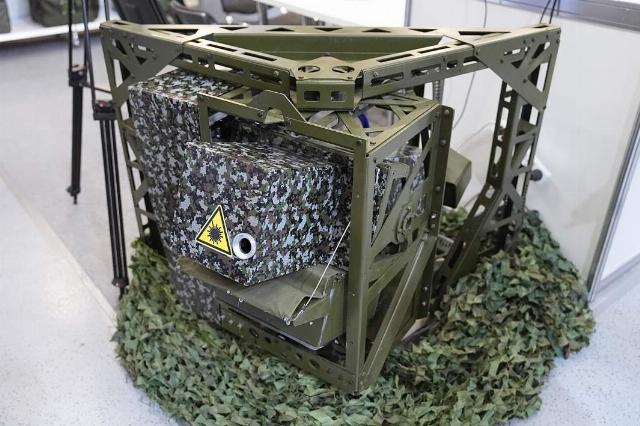
The air defense laser of the Lokmas location workshop
Image source: Photo: IZVESTIA/Pavel Volkov
"It can affect UAVs in several ways," said Stepan Ivanov, a representative of the company. — The system finds drones on its own, after which the operator can turn on visible or infrared lasers so that they blind the drones' thermal imagers and video cameras. Another laser can be installed on the complex to directly hit targets.
According to the developers, it is also possible to highlight flying objects with a laser beam. This will help mobile firing groups shoot down drones at night. Such products are already protecting important facilities in the country, the manufacturers say.
Destroy the drone swarm
The PPSH Laboratory presented the Katran mobile anti-drone air defense system. To search for and destroy enemy UAVs, it is equipped with a radar with an effective detection range of 15 km, an optical system, weapons of destruction and a "Gyrfalcon" sighting system.
In the latest modification, the installation can destroy UAVs without operator involvement — targets are determined using specially developed software with artificial intelligence.
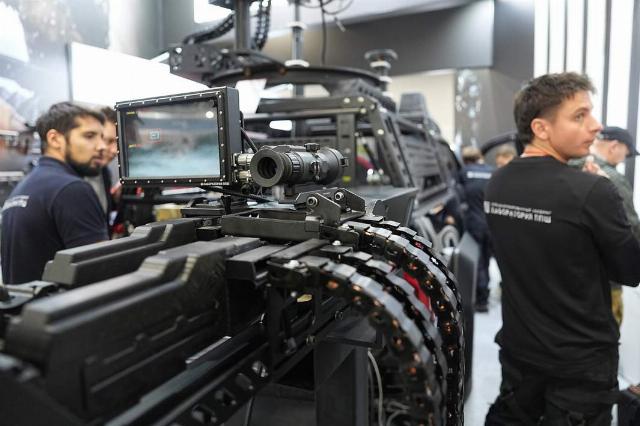
Mobile anti-drone air defense system with Katran targeting system
Image source: Photo: IZVESTIA/Pavel Volkov
"The high response rate and mobility allow the installation to work against a swarm of drones," said Denis Oslomenko, CEO of the company.
The complex's armament is a pair of 7.62 mm PKT machine guns.The platform also allows you to place directed energy systems (laser weapons).
The complex can select priority targets and destroy them based on their importance. It is designed to work on large UAVs of the "Fierce" type and can repel a raid by three or four drones. The PKT spark allows you to reliably destroy targets within a radius of at least 1 km. The developers note that several such installations will protect a large military or industrial facility. The complex is manufactured in stationary, mobile and automated versions.
Protection of industrial facilities
Gumich RTK has introduced the Impulse ground-based mobile tracked unmanned platforms. They can be controlled via radio, fiber-optic cable, or satellite communications.
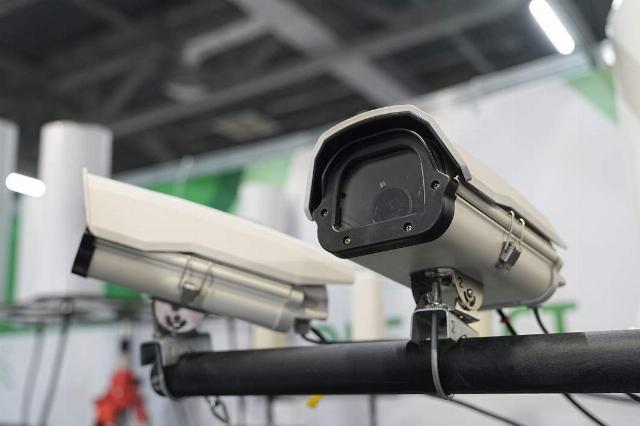
Electronic warfare and RER complex "Triglav"
Image source: Photo: IZVESTIA/Pavel Volkov
"We have developed a concept for the protection of strategically important oil refining and energy facilities," the developers told Izvestia. — We propose installing electronic warfare or electronic intelligence modules on the Impulse platform. They detect an aerial target and transmit the data to the operator. He, in turn, directs the air defense module, which houses anti-aircraft drones in special containers. They do not have a warhead, so they work on the principle of a slingshot, that is, they hit the UAV on approach with a direct hit.
The Zhukovsky-Gagarin Air Force Academy presented the Cheburashka complex, which allows to increase the range of drones – this was achieved through the use of two narrow—directional antennas. They simultaneously receive the video signal from the UAV, which ensures its maximum clarity, and do not allow the electronic warfare system to suppress the control channels.

Cheburashka universal antenna-rotary device
Image source: Photo: IZVESTIA/Pavel Volkov
Among the most interesting products are the ultralight exoskeleton "Ant", the UAV detection complex "Bulat-online", the hovercraft "Wind-900M2" and a number of others. Dozens of companies, including foreign ones, presented their products at the Interpoltech exhibition.
It aroused great interest from foreign experts. This year, according to the organizers, it will be visited by more than one and a half hundred military and police attaches, as well as representatives of the special services of several dozen countries, including Australia, Afghanistan, Venezuela, Kazakhstan, China and Mozambique.
Bogdan Stepovoy
